Point/Counterpoint is a beloved feature that first appeared in the fall 1972 edition of the Weeklings. PC/P is the product of an intellectual tradition hearkening back to storied Oxford debate squads and the golden age of radio, in which two authors match wits over random subjects while being forced to choose a side and defend it on the fly. Readers are advised to stand back, as the heat can get intense. This week’s arm wrestle involves bestselling author, cinephile, and Most Interesting Man in the World: Mr. Duke Haney.
Ladies and gentlemen, we are now on the clock with–for no good reason whatsoever–P/CP: The All Women Edition.
Gloria Grahame—
Point (Haney): Since you and I are both film-noir fans, it was inevitable, I guess, that we would compare notes on our favorite femmes fatales. When did we do that, anyway? Right, it was yesterday, when we were exchanging preparatory notes about our battle of wits here. Or maybe it’s not a battle. I’m confused. Also, I’m digressing—but you’ll expect that, as some posh Edwardian might have said. (Refer to the letters of Virginia Woolf for corroboration that “You’ll expect that” is a very posh-Edwardian thing to say.) But to the matter at hand: Jane Greer, most celebrated for tormenting the usually unflappable Robert Mitchum in Out of the Past, headed your list yesterday, which didn’t surprise me since Jane Greer, even at paramount moments of psychopathic amorality, looked like an angel made of sugar-cookie dough. Also, it didn’t surprise me because you probably suspected that I would choose Jane Greer and would therefore behave like a child whose favorite cup has been seized by a sibling. That’s mine! MOM, SEAN IS DRINKING FROM THE BARNEY CUP AND HE KNOWS IT’S MINE! Well, I’m not going to behave that way about Jane Greer. However, when you added Gloria Grahame to your list, you went too far. Yes, Sean Beaudoin, I will fight you for Gloria Grahame, but before I jet to Seattle to do exactly that, let’s have a friendly-rival moment in which we raise goblets to the woman who has led us to meet in a foggy clearing at dawn with rapiers and seconds.
Why did Hollywood undervalue Gloria Grahame? When her husband, Nicholas Ray, was in preproduction for his great noir In a Lonely Place, he apparently had to fight the studio tooth and nail to cast Gloria as the object of Humphrey Bogart’s understandable obsession. Ray also directed Gloria in another noir, Macao, and though she was meant to play second fiddle to the leading lady, Jane Russell, all I remember about Macao are shots that prominently feature Gloria’s boomerang brows, insinuating eyes, and insolent lips. Likewise, all I remember about still another noir, The Big Heat, is the scene where Lee Marvin disfigures the great Grahame face with hot coffee. Where is that goddamn Lee Marvin? Dead? Good. I’m not sure I could win a fight against Lee Marvin, with or without a rapier. But you, Sean Beaudoin, will not claim Gloria Grahame for yourself. Now, put down your goblet, or Barney cup or whatever the hell it is, and let’s get on with this. Your shoelace is untied!
Counter-Point (Beaudoin): Well, yes. I want them both. Desperately. I have been deeply in love with Jane Greer since I was thirteen, a progression that began with Barbara Eden and lingered on Samantha Eggar for a while, before my taste for noir truly developed. Out of The Past is like taking a long bath in turpentine while sipping a fine whiskey, and even the butchest among us would be liars to deny that it’s hard not to fall a little in love with Robert Mitchum by the final reel. So I am pleased you have bequeathed Miss Greer. And, as we’ve discussed before, In a Lonely Place is one of my all-time favorite movies, mostly for having the courage to maintain an utterly black heart throughout. But it may be Gloria Grahame’s dissipated, ruined performance in Odds Against Tomorrow that gets my vote as her finest. Back when actresses were allowed to be older than twenty-four, and cinematography was about Vaseline lenses and louvered curtain shadows, there were any number of women who could communicate the ugliness of all humanity in a glance. But for my money Ms. Grahame was far and away the best.
Macao is a bad film that looks great, and, yes, Gloria runs circles around the unfurled Jane Russell.
Also, Lee Marvin would have kicked both our asses at the same time. With ease.
Totally Illegal Follow-up Point (Haney): Admiring Robert Mitchum’s hair when it’s flying about in a fistfight is not the same thing as falling a little in love with him, right? Right?
Courtney Love—
Point (Beaudoin): Courtney Love is not a femme fatale. She’s barely a femme, and seems hazardously close to fatale on a regular basis. She’s more like a succubus. Or a junk-crazed harridan. She was everything I hated about the ’90s all wrapped up in torn nylons, Marlboro breath, and tube socks worn like debutante gloves. Back then it was hard to imagine—amidst the endless chronicling of her dissipation—a worse human being on the face of the earth. Even after her elaborate cosmetic surgery and brief equilibrium during the Larry Flynt period. Also, I find the repetitive three-chord screeching which comprises the majority of the Hole songbook to be wholly unlistenable. Not to mention that Courtney will forever be remembered as the remora whose overly lipsticked teeth sank deep into Kurt’s flank during his slow and depressing wade into the pre-suicidal shallows. So, yeah, that’s a pretty hard gig for even the most adjusted among us to live down. And yet, I have a soft spot for Miss Love. In fact, she’s just my kind of mess—totally, fully, unrepentantly wanton. Because, really, why pretend? She’s like a Joseph Campbell/Salomé archetype, some brazen strumpet plucked from the footage of a lost Cassavettes movie, her bit-part cut because it was too real for even Gena Rowlands to method act across from. Bottom line: Courtney gets a pass in my book, the same way Teddy Kennedy did. What do you expect from someone who has been held up and then systematically destroyed, profoundly and publicly? Not a thing. I say let her be.
(Also, if Hole happened to be the name of pretty much any random band of leather and bandana dudes, it would be one of the most dim-witted and misogynistic monikers in music history. But coming from a band fronted by Courtney, it’s almost a brave and hilarious anti-statement. She can crash at my house and burn cigarette holes in my sofa any time. As long as she promises never to pick up my acoustic guitar.)
Counter-Point (Haney): I, too, for similar reasons, have a soft spot for Courtney, even though I heard firsthand stories back in the day about what a horror she was. For instance, I knew the sister of a journalist who wrote something Courtney didn’t like, and Courtney would call this woman in the middle of the night and leave nasty messages—“You know you were the ugliest girl in high school” and blah-blah-blah—on her voicemail. She had Kurt call this woman, too, and though he tried to sound threatening, he, unlike Courtney, could never have made a convincing substitute for Joe Pesci in Casino. But having said that, I remember a point made by Camille Paglia about Courtney in a Salon column about the Oscars. This must have been the year that Courtney was supposed to be nominated, but wasn’t, for her part in The People vs. Larry Flynt. But she attended the ceremony anyway, and while presenting the award for Outstanding Achievement in Short Documentary Microphone Design, she took the opportunity to thank Hollywood for being so nice to her. To paraphrase Paglia: “I can’t imagine a true rebel saying such a thing.” I agree. Here was Courtney at the prom, and instead of reenacting Carrie, like any self-respecting punk would do, she kisses the asses of the jocks and cheerleaders who snubbed her and gave the queen’s wicker throne to Juliette Binoche. Yes, a goddamn foreign exchange student was elected prom queen, and Courtney didn’t even get to stand behind the wicker throne for the yearbook photo. If she had real balls, she would’ve torched the gym and electrocuted those jocks and cheerleaders she failed to drown with the fire hose.
Totally Illegal Follow-up Point (Beaudoin): Which is probably why Kurt shot himself—he also didn’t have the energy (or stomach) to stare down the thousands of knit-cap and goatee assholes who beat his ass and made fun of him throughout high school and then, in the sort of ironic reversal that only guitar-playing stardom can truly conjure, ended up mindlessly worshiping him. Also, he knew what he’d married into.
Jackie Kennedy—
Point (Haney): I’ve had a fascination with the early sixties for a long time, unlike all these Johnny-come-latelys who discovered the early sixties via Mad Men, a show that invites its enlightened twenty-first-century audience to sneer at those archaic white males who smoke indoors and drink on the job and devour the flesh of murdered mammals, meanwhile cheating on their doormat wives with underpaid, sexually-harassed secretaries. O how lucky we all are to live now and not then! But they did dress kind of cool, huh? In fact, design is partly the reason for my interest in the early sixties: the sharkskin suits and Trilby hats and sack dresses and pageboy hairdos, not to mention the beehives, which I don’t believe any TV show, least of all Mad Men, could ever get right, since the required pesticide—pardon me, hairspray—is bound to have since been outlawed by the EPA. That also goes for the industrial-strength mascara popularized by Elizabeth Taylor as Cleopatra.
The Rat Pack. The Twist. Spaghetti Westerns. TV horror hosts. Sean Connery as James Bond. The Kennedys. Oh, yes, I was supposed to be talking about the Kennedys, and specifically about Jackie, who was in the limo at the precise instant that the early sixties became The Sixties—and I know you know what I mean, Sean Beaudoin. That’s another reason I find the early sixties so interesting: because it really was a twilight zone, per the title of the most enduring TV show of the era. And Jack and Jackie presided over that era, literally in the case of the former, like the neo-royalty they were, despite the bootlegger money and Mob ties that put them in the White House. Sure, they were more style than substance, but that’s in keeping with royal tradition, and Jackie proved a master of both in the days just after her husband’s head exploded as she sat inches away in the line of fire. Can you imagine that? It’s still difficult to fully absorb. But even splattered with her husband’s blood and gray matter, she refused to leave his body until dawn the following day, and she insisted on celebrating their son’s third birthday, though it fell on the day of his father’s funeral, when he saluted the casket as it rolled past, one of several indelible moments orchestrated by Jackie, who largely planned the funeral, which she modeled after Abraham Lincoln’s. The eternal flame at Arlington was her idea. She selected the riderless horse. She swore she would personally answer every letter of condolence sent to her, and she did as she swore she would, though it took her years to do it. And in the only interview she ever gave about the assassination, she remembered that Jack used to play the Camelot cast recording late at night, and so coined the sobriquet still used for the early sixties. “There’ll never be another Camelot again,” she prophesied, and she was bloody well right. Maybe we really are as enlightened as Mad Men prompts us to believe we are, but either way, I doubt seriously that in fifty years there will be a show, distributed by whatever means, about the superlatively unstylish screen gazers of the early twenty-first century, even if the same Mad Men point is tacitly made: O how lucky we are to live now and not then!
Counter-Point (Beaudoin): The sheer madness that pervades everything about the way we idolize certain people—right before we give in to the compunction to destroy them—is epitomized no more perfectly than in arc of Jacqueline Bouvier Kennedy. There are so many things to say about each stage of her life, but I am especially fascinated by the Onassis years, the weird private island and yacht cocooning she chose. But what else could one expect the daughter of John Vernou “Black Jack” Bouvier III to do, after living down the most public murder in human history (while wearing bright pink Chanel) except to seek the protection and anonymity that only the obscene wealth of someone like Aristotle Onassis could offer? It was only a few months after Bobby was shot that she married Onassis, and it would be interesting to know if her final decision was made while watching footage from the Ambassador Hotel. In any case, I think Jackie was a pioneer, recusing herself from the peculiar brand of American madness that was the late sixties, just as a generation of leftists and hippies and back-to-the-land true believers would do only a few years later. She presaged the national dissolution (and disillusionment) that comes from the loss of idealism, the fallacy of politics, and the naiveté of half-baked utopias. She was the first of us to realize everything the Kennedy PR machine promised—and which a generation of teenagers embraced—namely the notion of better governance, justice, civil rights, and gender equality, were all going to be ground down by commerce and greed eventually anyway. So why not marry a billionaire?
Totally Illegal Follow-up Point (Haney): I’m a little perplexed. I thought I had set you up beautifully for a reference or ten to the zine you used to publish, Zapruder headSNAP, but you didn’t take the bait. As to the reason Jackie married Onassis, this quote, made after the assassination of RFK, should remove much of the mystery: “If they’re killing Kennedys, then my children are targets…I want to get out of this country.”
Debbie Harry—
Point (Beaudoin): I had a friend who was the general manager of a fancy hotel in Atlanta in the ’70s and he never tired of telling me about the week Blondie rode in for a few shows. He loathed Debbie Harry. He said she ran the staff in circles, treated him like shit, made increasingly unreasonable demands, and essentially was a complete nightmare. I tried to explain that they had just exploded from CBGB punk nobodies into one of the biggest bands in the world, and that she was probably dorked out of her mind on fresh fame, record sales, and the kind of uncut cocaine only freshly-minted pop stars and certain Bolivian generals had access to. So perhaps she should be forgiven for her foray into debauchery and weakness. He wasn’t buying it. He had zero forgiveness. Her molar-grinding diva routine must have been pretty bad, on par with Led Zeppelin’s fish-stuffing incident or any Tuesday night with Mötley Crüe, but some vestige of management decorum kept him from divulging the seamiest details. I nodded in sympathy, failing to mention that somewhere between my tenth and twelfth summers I truly loved Debbie Harry. I thought she was unbelievably hot. And I really dug Blondie as well. I knew I was supposed to dislike them. All my friends did. No one I knew thought they were cool. I would have been stomped in the hallway for suggesting otherwise. But there was something so coy, silken, and urbane about their sound that I was hooked from the moment I bought my first album from Columbia House. And their songs genuinely transported me back then—for good or ill—in a way that only a small subset of pop music can. Maybe it was my age, or my crappy boombox, or terror of the early 80’s in general, but listening to “I Didn’t Have the Nerve to Say No” and “War Child” and “Call Me” and “Detroit 442” was like suddenly being in a penthouse in Hong Kong doing Quaaludes and sipping white wine. I needed a whole lot of that sensation when I was twelve. The fact that, in reality, she was probably a cruel mistress only made me like her more.
Counter-Point (Haney): Have you ever heard the live track of “Nausea” on the X anthology, Beyond and Back? John Doe and the boys try a number of times to start the song, only to stop short when it becomes clear that Exene Cervenka hasn’t finished kvetching to the crowd about her vexing encounter with haughty Debbie Harry. You’ll remember the storm-the-Bastille mentality of old-school punks on the subject of rock stars, of course. Down with the aristocracy! Off with the royal heads! But Debbie abdicated at the acme of her fame to care for her boyfriend, Chris Stein, who was gravely ill with an ailment I could easily Google but won’t in what I hope is a refreshing change of pace. Debbie left the spotlight temporarily, but she did it quietly, without calling attention to her altruism, and if you would like further evidence that she could in fact be kind to people other than Exene Cervenka and Atlanta innkeepers, I recommend that you read, or read again, Please Kill Me, if possible on the john, where Please Kill Me is best enjoyed—and I mean that favorably. It’s a pity that Debbie was a cigar-store Indian as an actress, since, with or without peroxide, she looked more like a movie star than any movie star of the Carter-Reagan era (and, for that matter, all subsequent eras), though I still hope to eventually see Union City, a movie she headlined, now so obscure that no part of it, including the trailer, can be found on YouTube. (You can, however, watch Debbie’s screen test.) To break my refreshing change of pace, I’ve just googled Blondie’s terrific song “Union City Blue” and learned that, oddly, it can’t be heard in Union City—and, yes, I just said that a Blondie song is “terrific,” which, like you, I would’ve been hard pressed to say in days of yore. Blondie lost any claim to punk cred the second a parent, anybody’s parent, said, “You know, I like that song,” on hearing “Heart of Glass” for the 10,000th time, though Blonde remained, for me, a guilty pleasure, and I still listen to them every so often, attracted in part by Debbie’s buttery voice—but, hoping for another refreshing change of pace, “buttery” is the only suggestive adjective I’ll deploy in essaying a subject who tempts me to deploy many more.
The Duchess—
Haney (Point): Any mention of the early sixties calls to my mind the Duchess, who played rhythm guitar for Bo Diddley from 1962-66, when there were very few female singers in rock & roll bands, let alone female guitarists. Bo was, needless to say, a great performer, but he’s upstaged by the Duchess in every clip I’ve seen of them together, just as the Duchess upstages the Bo-ettes, Bo’s backup singers, despite wearing the same sleek sheath, shiny pumps, and high-on-top, long-in-back bouffant. The Duchess would command attention without the ax; with it, she’s mesmeric, banging out chords while swaying her hips in synchronized motion with the Bo-ettes, who seem like lesser priestesses of a cult of Aphrodite led by She Who Possesses the Electric Lute. How did the Duchess, upon being glimpsed on such TV shows as Shindig!, fail to produce the same reaction in teenage girls that the Beatles on The Ed Sullivan Show produced in teenage boys? Why did teenage girls not instantly rush out and buy guitars by the thousands? I will never understand, and I would like to think the Duchess didn’t understand, either, though she gamely continued to play with Bo after he ditched the Bo-ettes, upstaging him in lamé catsuits until she donned a bridal gown for another man and—a gloomy day in pop history—retired. It may be worth noting that, though the public knew her only by her aristocratic nom de rock (given to her by Bo, who spread the fiction, à la Jack and Meg White, that they were siblings), the Duchess was born Norma-Jean Wofford, an occult link to another high priestess of a cult of Aphrodite, Marilyn Monroe, who was born Norma Jean (or Jeane, depending on her mood) Baker.
Counter-Point (Beaudoin): Bo Diddley changed my life as a teenager. For some random reason, in Cape Cod of all places, I bought a cheap Best of Bo Diddley cassette in a gas station. I’m not sure why. I guess because he was holding a cool rectangular guitar on the cover and I dug his stance, rocking a rad red plaid blazer, but I was into LOUD back then, so it was way out of my usual realm. Something about it just called to me, amongst the hot dogs and Gatorade and Waylon Jennings. And then I got home and played the tape. That shuffle rhythm! I’d never heard anything like it. It was intoxicating. Every one of his songs used the exact same percussive technique, over and over again, and even so they all KILLED. I played that tape for my Van Halen- and Rush-loving friends, and even they could not deny the power of Bo Diddley. Suddenly all these longhairs I hung with were into “Pretty Thing,” Diddley blasting out of the back of chopped Novas at keg parties. I continue to feel a degree of pride that in the heart of lily-white Connecticut, and at an age when I truly didn’t know better, I was an extremely effective prosthelytizer for Bo’s brand of chunky shuffle-blues. But even so, none of us had any clue about the Duchess. If I had known about Norma-Jean Wofford back then, I might have expired on the spot. Literally, her mere existence could easily have killed me. The first time I saw a clip on the internet of those metronomic hips, not to mention the way she casually wristed out chords, all silken and Promethean in white heels, I could not believe fame had eluded her. But in a way it almost makes sense that she failed to inspire millions of girls to pick up guitars, because she is so intoxicating and otherworldly that she may well have done the exact opposite—what if she terrified and dispirited half a generation of young women so thoroughly by her mere presence that they watched game shows and ate dry oatmeal the rest of their lives instead?
Totally Illegal Follow-up Point (Haney): Fear is the only answer, yes. What teenager had a prayer of being a fraction as badass as the Duchess?
Carol Doda—
Point (Beaudoin): Carole Doda, or at least her legacy, pretty much owned the neighborhood of North Beach during the time I lived in San Francisco, a fact which never failed to amaze me. Doda, who started off at the Condor Club while still clothed, is probably the most famous stripper of all time. Sure, there was Gypsy Rose Lee and Blaze Starr, but Doda was one of the first recipients of silicone injections. She also had the presence of mind to parlay her burlesque into a nationwide dance craze (“The Swim,” performed by Bobby Freeman, who led her backup band). Not to mention appear in various movies, books, and hipster party scenes throughout the 70’s. She still makes appearances at various corporate retreats and Sultan’s birthday parties, and continues to operate a lingerie line under her name. But every time I walked through North Beach back then, on even the most innocent of errands, her presence could be felt. Not only along Topless Row, but in the surrounding cafes and dives and dirty book stores. It was not sex—or at least not sexy. There was a lingering mist of desperation. Or sexual clot. It was easy to take a deep breath and be struck with a palpable notion of what that early ‘60’s carnival/carnal excitement must have been like: smoky rooms full of men in cheap suits and pork pie hats absolutely awestruck by something as innocent as the unfurling of a large-ish pair of breasts. I picture those men as zoot-suited wolves from old Bugs Bunny cartoons, whistling at Bugs in drag, all hepped-up with pockets full of weighted dice and fifths of Old Overholdt, ready to chew sheet metal while they counted the seconds until the midnight show. In the era of the internet and omnipresent porn, it’s almost impossible to believe that during the reign of Carol Doda there were arrests, court cases, obscenity charges, payoffs, prohibitions, arson, and even a backstage visit by Nicaraguan dictator Anastasio Somoza—essentially an entire industry of graft, lust, and judicial hypocrisy all centering around this one woman slipping out of her bra to the beat of a snare and a hi-hat.
Counter-Point(Haney): Carol Doda may have been the first stripper to lose the pasties, but I think silicone was the key to her success. People could see natural boobs—even huge natural boobs—anywhere on Topless Row (a term I never heard until a moment ago), but here was a new use for plastic, an American panacea if ever there was one, so that a night at the Condor Club could sincerely be characterized as educational by men and women alike. Yes, as tickled as I am by your picture of Carol Doda’s audience, I would venture that many curious women were on hand, and some of them no doubt determined that they, too, should have plastic boobs, paving the way for the populous implant sorority of today. And soon we’ll have plastic brains. I mean, we already do, but they’re presently carried outside the skull, and not only is that inconvenient, it’s miles short of the posthuman Shangri-La desperately craved by crypto-mystic Singularitarians. Guys, have you met Carol Doda? You’re from Silicon Valley, and she pioneered silicone peaks, so you’re bound to click. But I’ve wandered far, in this mad rant, from a bit in your Condor Club sketch that I meant to immediately address: Bugs Bunny in drag. He could make for a remarkably comely transvestite, you know, with those Chiclet incisors and velvety ears that, in drooping mode, are like de-facto hair. Of animated rodents, only Thumper’s girlfriend in Bambi may be hotter than faux-femme Bugs. Okay, I am done here.
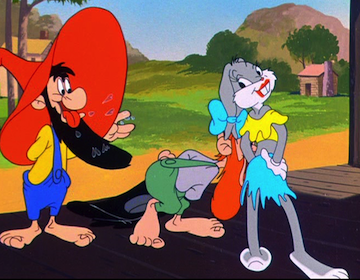
Hard to know how to process this information now, but as a child I often found Bugs to be quite sexy, and, in fact, have little doubt that on some level his animated cross-dressing informs my current sexuality.
Diane Arbus—
Point (Haney): I love photography collections, and the first such book I bought after I moved to New York as a teenager was Diane Arbus: An Aperture Monograph. This was back when every arty New Yorker had a home library that, among the young, typically included the usual dead literary lions (heavy on the twentieth century), The Catcher in the Rye (mandatory for Americans but not for Europeans), French Theory (because, like, semiotics demand, y’know, deconstruction), Vintage Contemporaries (an oxymoronic name for an imprint boosted by the debauched-yuppie yarns of Jay McInerney), a smattering of postwar pulp (especially Black Lizard titles by Jim Thompson), and at least one Shakespeare play in a Signet or Folger edition (with marginal notes jotted in college or prior to an audition at the Public Theater). Most young artists couldn’t spring for expensive coffee-table books, but the Diane Arbus monograph wasn’t expensive, so that was the coffee-table book you were likeliest to find in squalid Alphabet City or Williamsburg flats. Of course the price was a small part of the reason. The work of Diane Arbus appealed to precisely the sort of kids who had arrived in Gotham hoping they wouldn’t be treated as the freaks they’d been taken to be in Dullsville just because they didn’t act or dress or think like “normal” people blind to their own eccentricities. But Diane Arbus was alert to those eccentricities, and she made them stark in her photographs, meanwhile blurring the line between “normal” and “abnormal,” so that a young boy in Central Park, grimacing as he grips a toy grenade unsettles the viewer far more than a flabby hermaphrodite in a sequined bra and G-string. TV continued where Arbus left off, though of course without her artistry. For decades, “freaks” of every kind were presented on talk shows that, save for Donahue, weren’t around when Arbus was alive. Eventually, and predictably, the public became jaded. Today on Geraldo: Transsexual triplet dwarves! Yawn. That’s largely the reaction, I would guess, to the work of Diane Arbus these days, where it once literally drew spit at exhibitions. It bores now not just because its subjects are no longer outré but because photography itself, or anyway “realistic” photography, bores in the image-steeped digital age. It’s like people still say of Picasso: “My kid can do that.” Some gimmicky manipulation is required, a whetting of the widespread taste for childish fantasy. If I’m wrong, if a Diane Arbus photograph can still strike a nerve, it’s because she always captured something intimate, even when her subjects wore masks, as they often (and, arguably, always) did. “Freaks,” we can handle. Intimacy, not so well.
Counter-Point (Beaudoin): I studied photography during the single most useless years to work toward the single most useless degree in academic history: a photography BA in 1990 (technically I have a degree in Film. I think. Or maybe it’s Communications. In any case, it might as well be a Masters in Phrenology). Within two years of graduation, digital technology would render practically all of my hard-won chemical and luminescent skills utterly useless. I moved to San Francisco and immediately tried to find a job—any job—that involved traditional photography: some sort of wage slave in a darkroom, a docent at a museum, an internship at a gallery, a laborer in a Nikon factory. There was nothing. I remember one early Saturday morning answering an ad in the classifieds for “traveling photog” and arriving at some shitty office building downtown where—literally—maybe a hundred men were waiting with resumes. And by men I mean MEN, all bearded and wearing safari jackets and looking like they’d been stringers for AP and Reuters for decades and had just returned from assignment in the Belgian Congo or Kuwait. And there I was with zero actual experience, a tourist camera, and my lame arty-collegiate portfolio. For some reason I didn’t just turn around and walk out. It may have been because these dudes kept going in for their interview and then a few minutes later storm out muttering before they blew through the front door. I was curious. When it was my turn, I walked into the office where two sleazy salesman types gave me a desultory rundown on the assignment: it was riding around on weekends in the suburbs and hustling local baseball and soccer leagues for team photo concessions. I seriously was so desperate that I almost took the job. And they wanted me. Which should tell you everything you need to know.
Oh, Diane Arbus? I admire her enormously. I discovered her as I devoured the photography books in our college library while looking to steal ideas, and her work was highly influential. Did you know she was married to Allen Arbus, who played the psychiatrist Dr. Sydney Freedman on M*A*S*H? Of course you knew that. He was a photographer himself, and was also in the awesome Robert Downey Sr. masterpiece/mess Greaser’s Palace.
Well, then did you know that the two little girls from The Shining were based on one of Diane Arbus’ photographs? Kubrick was also a huge fan of hers—and a phenomenal still photographer in his own right.
Paula Fox—
Point (Beaudoin): Over the past two decades I’ve mentioned Paula Fox maybe eight or ten times at various cocktail parties and couple’s dinners full of musicians and filmmakers and literary types, and only once has someone looked back at me with anything resembling recognition. And that person nearly spit out half a glass of Malbec in order to yell “Oh, my God, I love her!” Well, I love Paula Fox too, which is why it mystifies me that she is so widely unknown. Every time someone lauds John Updike or Phillip Roth—both Fox contemporaries—I want to pull a copy of The Widow’s Children out of the lining of my trench coat and slyly palm it over like their first free fix. Okay, I’ll just come right out and say it: Paula Fox’s ‘70’s novels are superior to Updike’s. And are often as good as Saul Bellow’s. Desperate Characters is almost painful to read it’s so real, each sentence a brutal little sonnet. In a mere 150 pages she deconstructs Manhattan, marriage, fear, self-delusion, liberalism, and the ominous randomness of existence. Do you think I’m laying it on too thick? Then try reading Poor George, which is like Miss Lonelyhearts sautéed in acid. The fact that her books were out of print for years before a minor resurgence in the mid-nineties is a pretty damning confirmation of the gender double-standard in publishing. But forget politics, Paula Fox’s writing is beautiful, and very original. I will not rest until at least five more people know who she is.
Counter-Point (Haney): You only have four more to go, Sean Beaudoin, knowing as you do that I’m not the person who spit out half a glass of Malbec on hearing you speak the words “Paula Fox.” In fact, I’m a little taken aback that you’ve sprung Paula Fox upon me, since, a stranger to her name and work, I’m unable to provide a true Counter-Point™. The best I can do is to recommend another weirdly overlooked writer, Eve Babitz, whose books are all still out of print, including her first, Eve’s Hollywood, which sells for around $150 on Amazon, a price I may ultimately pay, not only because I’m sure I would like Eve’s Hollywood but because it’s apparently relevant to a book of my own that I’m researching. Eve Babitz was recently described, in the Los Angeles Times or somesuch, as a kind of West Coast Edie Sedgwick, when, as a product of Santa Barbara, Edie Sedgwick was the West Coast Edie Sedgwick. Besides, she died at twenty-eight, while Eve Babitz turned seventy last May, and bulimic Edie was never a writer, while voluptuous Eve was never a junkie. But both were muses, I suppose it can be fairly said, to influential artists of the sixties (that seemingly inescapable decade), and both dallied with rock stars (Edie with Dylan, Eve with Jim Morrison), and both are now best known for photos taken of them (or, in Eve’s case, a single photo that has her, nude, playing chess with a clothed Marcel Duchamp). Eve should be best known for her books, however. All of her books concern Los Angeles, where, except for a brief period in Europe, she has lived her entire life, so that she’s been idiotically compared to such L.A. writers as Joan Didion and Nathaniel West. But Eve’s funny, cool-girl style owes nothing to them, and I’m convinced it was copied as soon as she invented it and those copies were in turn copied, and so on, making her style a familiar style, though it’s presently in a degraded form and you have to dig to locate the sterling original, which, as with any gem, can justifiably run you a mint.
Totally Illegal Follow-up Point (Beaudoin): Okay, now I must own that book. Do you think I’m kidding? I am not kidding. Also, at this point, I feel compelled to say, sir, despite our dueling stances, that this has been quite a pleasure. Selah.
Ladies and gentlemen, we have reached the finish line of this week’s Point/Counter-point. Thank you once again for participating. The votes are being tallied and will be released to the public after they’ve been verified J.D. Powers and Associates, as well as the Washington State Attorney General.
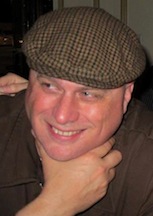 D. R. HANEY is the author of a novel, Banned for Life (2009), and an essay collection, Subversia (2010). He got his nickname, Duke, after injuries sustained in a near-fatal car accident caused him, friends alleged, to walk like John Wayne. Currently working on another essay collection scheduled for publication by TNB Books in 2014, he lives in Los Angeles.
D. R. HANEY is the author of a novel, Banned for Life (2009), and an essay collection, Subversia (2010). He got his nickname, Duke, after injuries sustained in a near-fatal car accident caused him, friends alleged, to walk like John Wayne. Currently working on another essay collection scheduled for publication by TNB Books in 2014, he lives in Los Angeles.

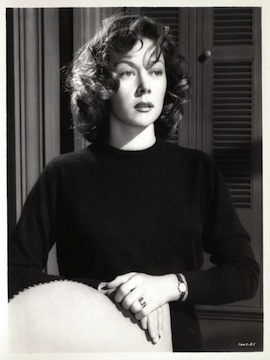
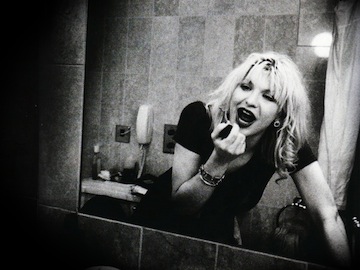
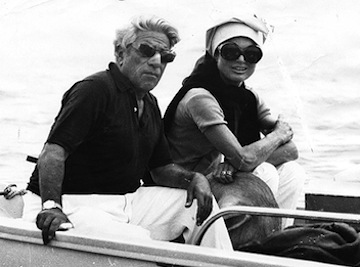
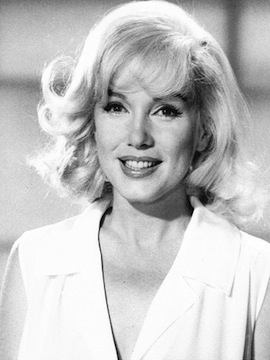
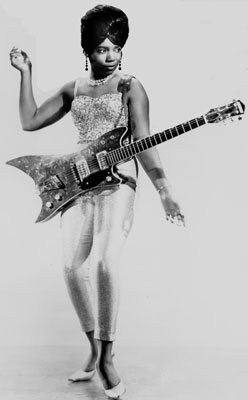
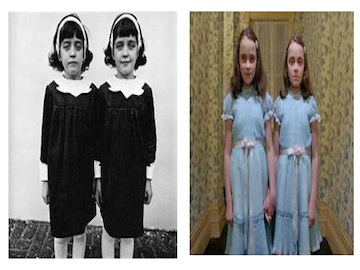
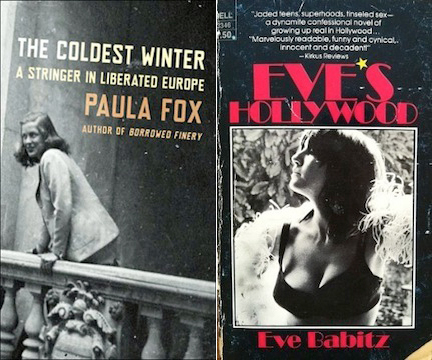


Years after the JFK assassination, Chairman Mao was asked how he thought the world would be different if Krushchev had been killed instead of Kennedy. His reply: “I don’t think Aristostle Onassis would have married Mrs. Krushchev.”
Also, Duke, Debbie Harry is pretty good in HEAVY.
Who knew that Mao could be so cocktail-party witty?
I haven’t seen “Heavy.” I’m going to continue boycotting all efforts, past and future, of the “Heavy” director after having seen his Johnny Cash biopic.
The horror. The horror.
This is an amazing post on Club Penguin game. I don’t usually post commentary but experiencing the above commentary made me leave an answer. I was looking for a club penguin membership hack and observed one after examining over 49 unique website pages. Only not one but two performed, the information from this online site and the Club Penguin Membership Hack from ImperialCheats.com.
Dear Club Penguin Money Hack:
I know you’re a bot or a desperate Eastern European and, either way, you’ll never read this, but I did want to thank your response to my piece with Sean about Club Penguin game. I’m amazed that you were able to see that it’s, in fact, about Club Penguin game, though Sean and I didn’t think anyone would notice, and your remark is further appreciated since you “don’t usually post commentary but experiencing the above commentary made me leave an answer.” And yours made me leave an answer! See how that works?
But you can’t because you’re either a machine or you can’t read English. Oh, well.
XO
Duke
Pingback: Soft-spoken teen accused of killing Mass. teacher | giavanidkt455
Fantastic points altogether, you just received a new reader. What might you suggest about your put up that you simply made some days ago? Any certain?
Pingback: 104 Weeks of The Weeklings: The Best of Our First Two Years | The Weeklings
The Americana in here has the wit and charm of chrome and neon together . Thank you. Don’t stop! Round two?
Wow, that’s what I was looking for, what a information! existing here at this weblog, thanks
admin of this website.
Feel free to surf to my blog post; Shadow Fight Hack, http://www.youtube.com,
Great news for iPhone and Ipad people! Do u desire to have Kamen rider in your hand?. You’ve seen heroes a few times on TV, now It’s ideal time to think&guessing them
kamen rider TDS http://apple.co/293e5r0